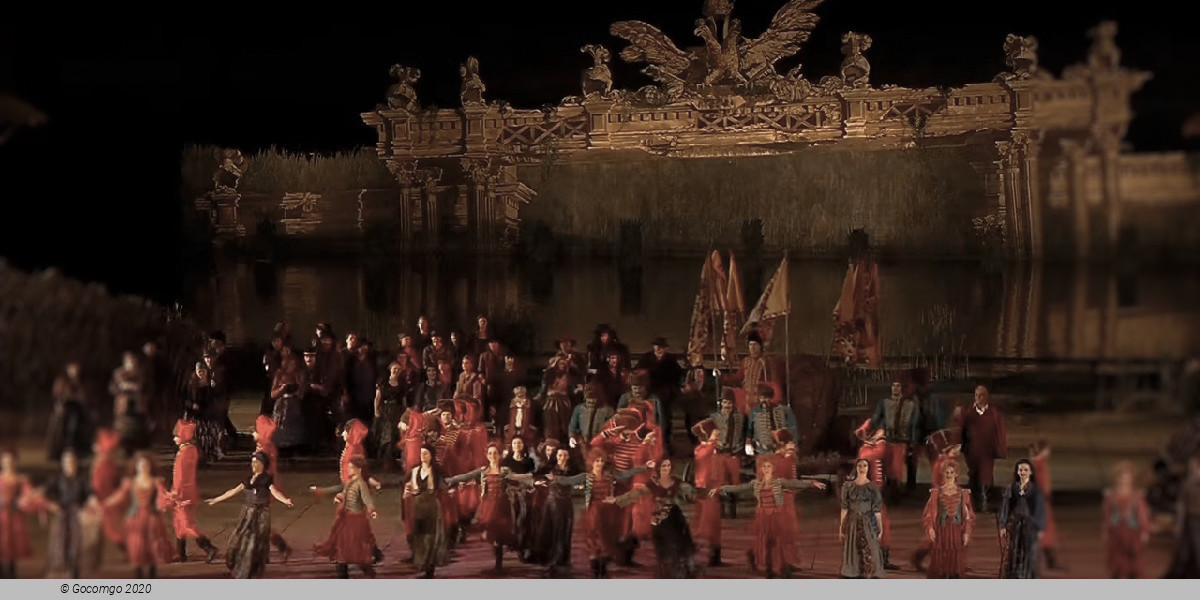Mörbisch Floating Stage. Seefestspiele Mörbisch (Mörbisch am See, Austria)
Mörbisch Floating Stage. Seefestspiele Mörbisch

The initiative for the Seespiele, founded in 1955-57, came from the chamber singer Herbert Alsen, who was celebrated at the Vienna State Opera and who, together with his wife, the Berlin-based costume designer Gisela Bossert, was looking for the venue accidentally discovered a vacation spot that was climate-friendly to his voice and which was permanently touched by the peculiar musicality of this landscape.
Alsen's plans were enthusiastically received by the local council of Mörbisch and the representative of the state, Landesrat Hans Bögl, especially since the project fit into the tourism concept of the municipality and the state, and Alsen subsequently agreed to initially grant the directorate of the Seespiele for five years take over (with reference to any competition with the Bregenz Festival), emphasizing that the Seespiele in Mörbisch did not want to be a festival that would increase the large number of festival venues.
After two years of preparation, the opening took place on July 6, 1957 with the operetta Der Zigeunerbaron by Johann Strauss.
The floating stage was built in a bay next to the Mörbischer bathing beach on hundreds of pilots according to the plans of architect Ferry Windberger, the designer of the first Bregenz floating stage. Their dimensions were 42 by 20 m; the auditorium created by the filling of the lake comprised 1,500. Seats. After an expansion in 1959, 3,000 people could be accommodated. Today the auditorium has over 6000 seats. In the following years, due to the great public response, there were constant extensions, both in terms of the number of performances and the size of the auditorium and stage. From the initial six performances with around 7,000 spectators (1957), there was an increase to over 30 performances in July and August.
In 2006, a new sound system, which was developed by the Fraunhofer Institute for Digital Media Technology and is also in use at the Bregenz Festival, was put into operation. This means that directional listening is possible despite the size of the stage.
In 2018, specially staged performances for children were also shown for the first time. A one-hour adaptation by Countess Mariza was shown in June 2018 on a stage set up on the festival grounds in a total of six performances. There was space for up to 250 children per performance, and visitors were also given the opportunity to sing and dance along. The aim was to bring the operetta closer to children. The same soloists were to be seen on stage as in the regular performances. As part of the Austrian Music Theater Prize 2020, the Seefestspiele were awarded the prize for the best youth and children's music theater production for Land of Smiles for Children.


